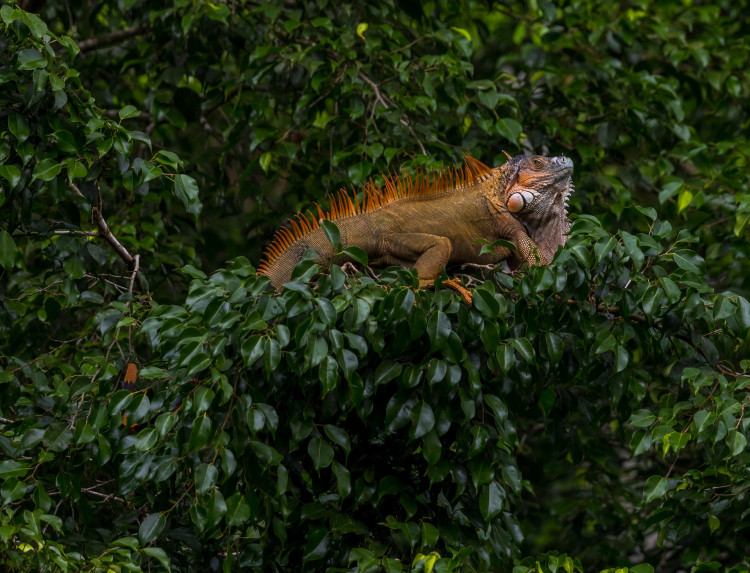With the vastness of the heavens, it's entirely possible anything could fall off from it. But if it's not related to the weather, then it has no business being up there. Or so you thought.
Iguanas falling from Florida skies
In southern Florida, when the weather gets cold, the iguanas that normally hang out in the treetops grow too old to hold on to the trees. When their metabolism slows down, the lizards get stiff, fall to the ground, and look dead; but as soon as the temperature warms up, they get back into motion.
A bright green fireball in Australia
Researchers captured an impressive video as a bright, green meteor zipped through the southern coast of Tasmania, Australia-though sadly, the video is in black and white. A research vessel named Investigator, run by Australia's national science agency, CSIRO, filmed the fireball as it exploded through the Earth's atmosphere, crossed the sky, and then disintegrated over the Tasman Sea. People who were first-hand observers of the meteor said it was green to the naked eye.
An exploding SpaceX prototype
The SpaceX Starship program deployed a prototype called SN8 on a high-altitude test flight, and everything went according to plan-other than landing. The prototype took off from Boca Chica, Texas, SpaceX, and zoomed some 12.5 kilometers (7.8 miles) into the atmosphere, executing complicated aerial maneuvers along the way. The vehicle then went down to a marked landmark on the field, but it came in too soon and broke into flames. The explosion happened just six minutes and 42 seconds after the start of the operation.
Costa Rica's rainbow meteorite
A rainbow-colored space rock broke up over Costa Rica in 2019 and dispersed rubble between the villages of La Palmera and Aguas Zarcas. Now, ongoing experiments indicate that the fireball could contain the chemical building blocks of life. Originally, the soft meteor broke off a larger asteroid, produced from the dust of an ancient nebula. The very nebula would have given birth to our solar system later. The rainbow comet has complex carbon compounds.
Updates on the dino-killing asteroid
The monstrous space rock that wiped out the dinosaurs crashed into Earth at such a high angle that the dinosaurs never even stood a chance. Scientists modeled the direction of the asteroid and observed that it was at an angle of around 60 degrees above the horizon. Compared to the shallower angles of impact, this approach caused the asteroid to spit almost three times as much sulfur and carbon dioxide into the atmosphere, according to the model. Gas emitted as a result of the effect caused global climate change and destroyed 75% of all life on Earth, including all non-avian dinosaurs.





